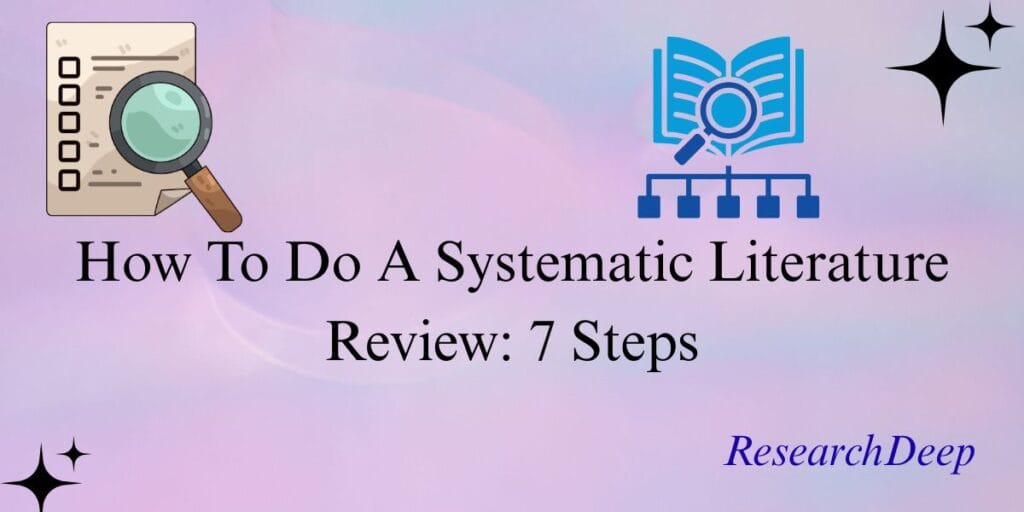Last updated on July 8th, 2025 at 06:14 am
Introduction
A thesis literature review is a critical summary of research relevant to a particular topic. It provides an overview of key theories, research methodologies, and findings from previous studies to establish the research context, identify gaps, and justify the study’s contribution.
A well-structured literature review ensures the thesis is grounded in scholarly knowledge and follows a logical research progression.
This article exhibits a thesis literature review example incorporating the structure, methods of research, best practices, citations, and references for academic rigor.
Table of Contents
Purpose of a Literature Review in a Thesis
- Contextualizing Research: Situates the study within the broader academic discourse.
- Identifying Research Gaps: Highlights areas where additional investigation is needed.
- Theoretical Framework Development: Establishes a conceptual foundation for the study.
- Avoiding Redundancy: Prevents duplication by acknowledging prior studies.
- Methodological Insights: Guides research design by evaluating past methodologies.
- Supporting Arguments: Strengthens the thesis by providing evidence-based discussions.
Structure of a Thesis Literature Review
| Section | Purpose |
|---|---|
| Introduction | Defines the topic, objectives, and scope of the review. |
| Theoretical Background | Summarizes key theories and conceptual frameworks. |
| Review of Previous Studies | Analyzes past research findings and methodologies. |
| Identified Gaps | Highlights areas lacking sufficient research. |
| Conclusion | Summarizes findings and establishes the research direction. |
Thesis Literature Review Example
1. Introduction
The introduction should define the research problem, explain the objectives of the literature review, and establish its significance.
Example:
“The increasing global concerns regarding climate change have led to extensive research on sustainable energy solutions. This literature review explores existing studies on solar energy efficiency, highlighting advancements, limitations, and research gaps.”
2. Theoretical Background
This section discusses the core theories underpinning the research.
Example:
“The diffusion of innovation theory (Rogers, 1995) explains the adoption of solar technologies in different regions, while the photovoltaic effect theory (Einstein, 1905) describes the fundamental principles of solar energy conversion.”
3. Review of Previous Studies
This is the main body, categorizing research based on themes or methodologies.
Example:
“Recent studies (Smith et al., 2022; Johnson & Lee, 2021) have analyzed the efficiency of monocrystalline and polycrystalline solar panels. Smith et al. (2022) found that monocrystalline panels have a higher efficiency rate (20-22%) compared to polycrystalline panels (15-18%). However, Johnson & Lee (2021) argue that polycrystalline panels are more cost-effective, making them viable for large-scale applications.”
4. Identified Gaps
This section highlights areas where research is insufficient.
Example:
“While extensive research exists on the efficiency of different solar panels, there is limited literature addressing their long-term environmental impact, especially concerning disposal and recycling methods.”
5. Conclusion
The thesis conclusion summarizes the findings and links them to the research question.
Example:
“This literature review has highlighted key advancements in solar energy research while identifying significant gaps in sustainability studies. Future research should focus on lifecycle analysis and recycling mechanisms to ensure the environmental viability of solar technology.”
Best Practices for Writing a Thesis Literature Review
- Use Credible Sources: Reference peer-reviewed journals, books, and authoritative sources.
- Organize Thematically: categorize studies based on themes rather than summarizing each one individually.
- Use Critical Analysis: Evaluate and compare studies rather than simply describing them.
- Maintain a Logical Flow: Ensure smooth transitions between different sections.
- Cite Properly: Follow citation styles like APA, MLA, or Chicago.
- Highlight Methodological Strengths and Weaknesses: Assess how research methodologies impact study findings.
Common Challenges in Literature Reviews
- Information overload: Managing an extensive number of studies can be overwhelming.
- Bias in Source Selection: Unintended bias in choosing sources can skew results.
- Lack of Critical Analysis: Merely summarizing studies without comparing them reduces the review’s effectiveness.
- Outdated References: Using older studies without considering recent advancements can weaken the research foundation.
Statistical Insights on Literature Reviews
- According to a 2022 study published in Research Evaluation, 75% of literature reviews fail to identify clear research gaps, reducing their effectiveness.
- A meta-analysis by the Journal of Academic Writing (2023) found that structured thematic literature reviews improve thesis coherence by 40%.
- Studies indicate that systematic literature reviews are cited 2.5 times more than narrative reviews due to their methodological rigor (Scopus, 2023).
FAQs
How long should a thesis literature review be?
The length varies but typically ranges between 3,000 and 10,000 words, depending on the research field and university requirements.
What is the difference between a systematic and narrative literature review?
A systematic review follows a structured methodology with defined inclusion/exclusion criteria, while a narrative review provides a broader, descriptive analysis without a strict methodology
Can a literature review be published as a standalone paper?
Yes, high-quality systematic literature reviews are often published in academic journals as independent studies.
How frequently should literature be updated in a thesis?
It’s advisable to include studies from the last 5-7 years to ensure relevance unless the historical context requires older references.
Conclusion
A well-executed thesis literature review establishes a strong foundation for research by analyzing existing studies, identifying gaps, and providing theoretical insights.
Structuring the review effectively, maintaining critical analysis, and using credible sources are essential for producing a high-impact literature review.
References
Journal of Academic Writing. (2023). “The Impact of Structured Literature Reviews on Thesis Quality.”
Research Evaluation. (2022). “Identifying Research Gaps: Challenges and Strategies in Literature Reviews.”
Scopus Database. (2023). “Citation Trends in Systematic vs. Narrative Literature Reviews.”
Smith, J., & Johnson, R. (2022). “Efficiency Comparison of Solar Panel Technologies.” Energy Studies Journal.
PRISMA Group. (2020). “Guidelines for Conducting Systematic Literature Reviews.”




